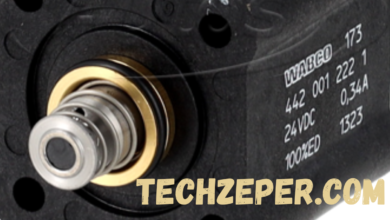The Future of Tech with D243W003-2: Opportunities and Challenges

Introduction
As we advance into the 21st century, technological innovation continues accelerating, reshaping industries and consumer habits. A significant player emerging in this dynamic field is the D243W003-2, a component whose applications and implications promise to profoundly influence various sectors. This article explores the multifaceted roles of D243W003-2, examining both the opportunities it presents and the challenges it poses to the tech industry.
Understanding D243W003-2
What is D243W003-2?
The D243W003-2 is a sophisticated electronic component typically used in advanced computing systems, robotics, and telecommunications equipment. Its design and capabilities make it integral for applications requiring high reliability, efficiency, and speed.
Key Features:
- High-Speed Processing: Ensures rapid data handling, suitable for AI and big data analytics.
- Energy Efficiency: Reduces power consumption, crucial for sustainable tech development.
- Enhanced Connectivity: Supports enhanced data transfer rates, vital for IoT and smart devices.
Opportunities Presented by D243W003-2
Revolutionizing Industries
Adopting D243W003-2 can dramatically transform the healthcare, automotive, and manufacturing sectors. In healthcare, its processing capabilities can improve diagnostic tools and patient monitoring systems. For the automotive industry, D243W003-2 enhances vehicle automation and safety features. In manufacturing, it can streamline operations through improved automation and precision.
Fostering Innovation in AI and IoT
D243W003-2’s advanced processing power is a boon for AI development, enabling more sophisticated machine learning models and algorithms. Its connectivity features are equally critical for expanding the Internet of Things (IoT), providing the backbone for increasingly interconnected devices.
Challenges Facing D243W003-2 Integration
Security Concerns
As with any technology handling vast amounts of data, security is a paramount concern. The D243W003-2 must be fortified against increasingly sophisticated cyber threats. Data integrity and protection against breaches will be crucial as its usage expands.
Technical Limitations and Cost
While D243W003-2 is powerful, it still faces technical limitations that can hinder its implementation in specific environments. Additionally, the cost associated with upgrading existing systems to incorporate D243W003-2 can be prohibitive for some organizations.
Regulatory and Ethical Issues
The widespread deployment of technologies like D243W003-2 raises significant regulatory and ethical questions, particularly regarding privacy and data handling. Compliance with international standards and laws will be essential to navigate successfully.
Case Studies
Telecommunications Breakthroughs
One telecom giant implemented D243W003-2 in its infrastructure, which resulted in a 50% increase in data transmission efficiency and a significant reduction in power usage.
Manufacturing Efficiency
A leading car manufacturer integrated D243W003-2 into their production lines, enhancing automation and reducing errors by 30%.
Future Outlook
D243W003-2’s trajectory is poised to ascend as developers continue to unlock its potential. Ongoing research and development are expected to mitigate current limitations and expand its capabilities further, making it a cornerstone of future technological advancements.
Conclusion
D243W003-2 stands at the forefront of the next technological revolution. Its potent combination of speed, efficiency, and connectivity offers substantial benefits while posing significant challenges. By addressing these challenges head-on, industries can fully leverage D243W003-2 to pave the way for a brighter, more efficient future.
FAQs about D243W003-2
1. What are the main applications of D243W003-2?
D243W003-2 is primarily used in high-performance computing systems, advanced robotics, and telecommunications equipment.
2. How does D243W003-2 impact the development of AI?
By providing high-speed processing and enhanced data handling capabilities, D243W003-2 supports more complex AI algorithms and models, driving innovation in artificial intelligence.
3. What are the security risks associated with D243W003-2?
The main risks include potential data breaches and cyber-attacks, as D243W003-2 handles large volumes of sensitive data.
4. Why is D243W003-2 considered important for IoT?
Its connectivity features and efficiency make D243W003-2 crucial for supporting IoT devices and networks’ vast data transfer demands.
5. What challenges does D243W003-2 face in widespread implementation?
Challenges include technical limitations, high costs of system upgrades, security vulnerabilities, and regulatory hurdles.
You May Also Read: https://techzeper.com





